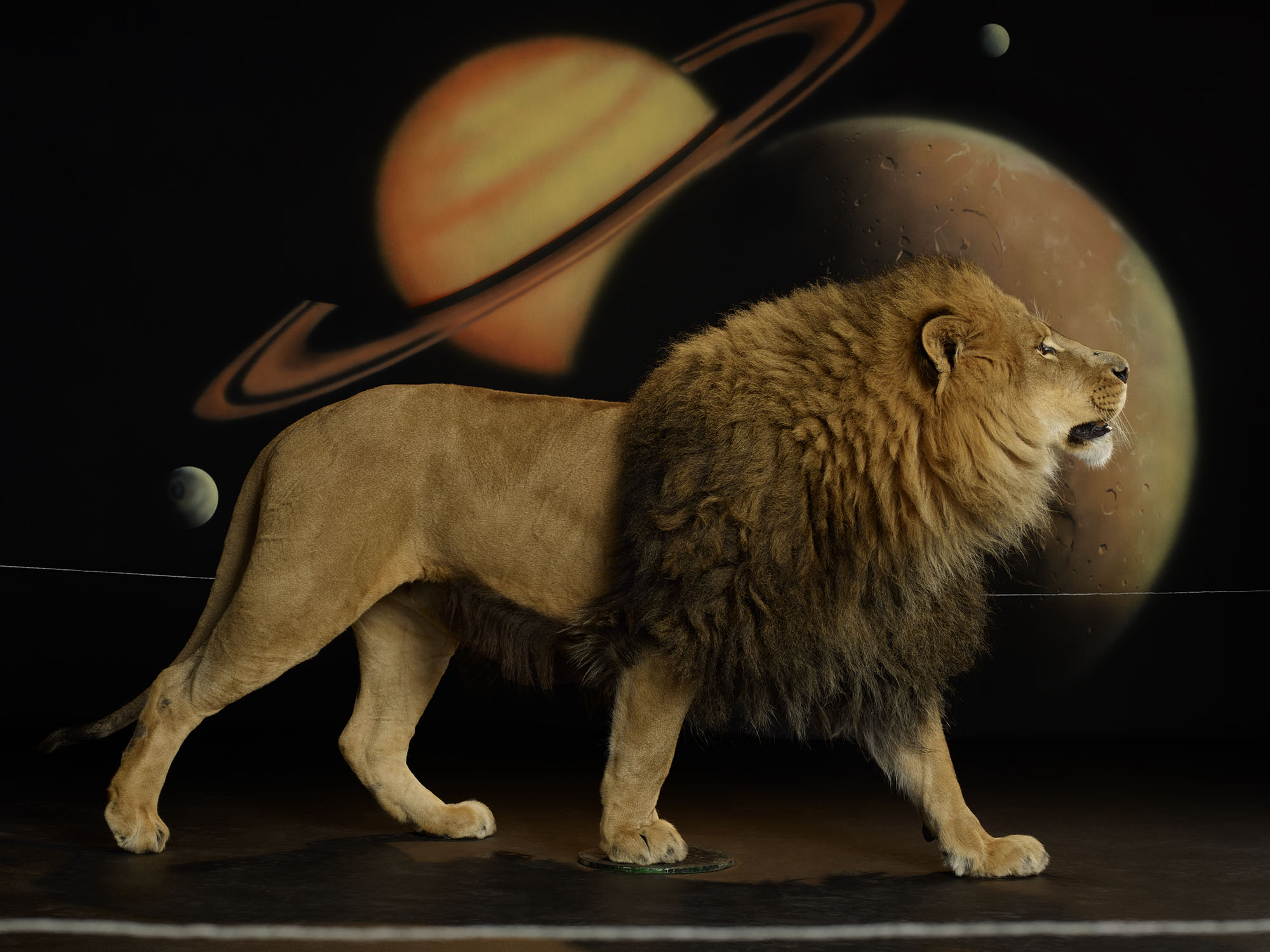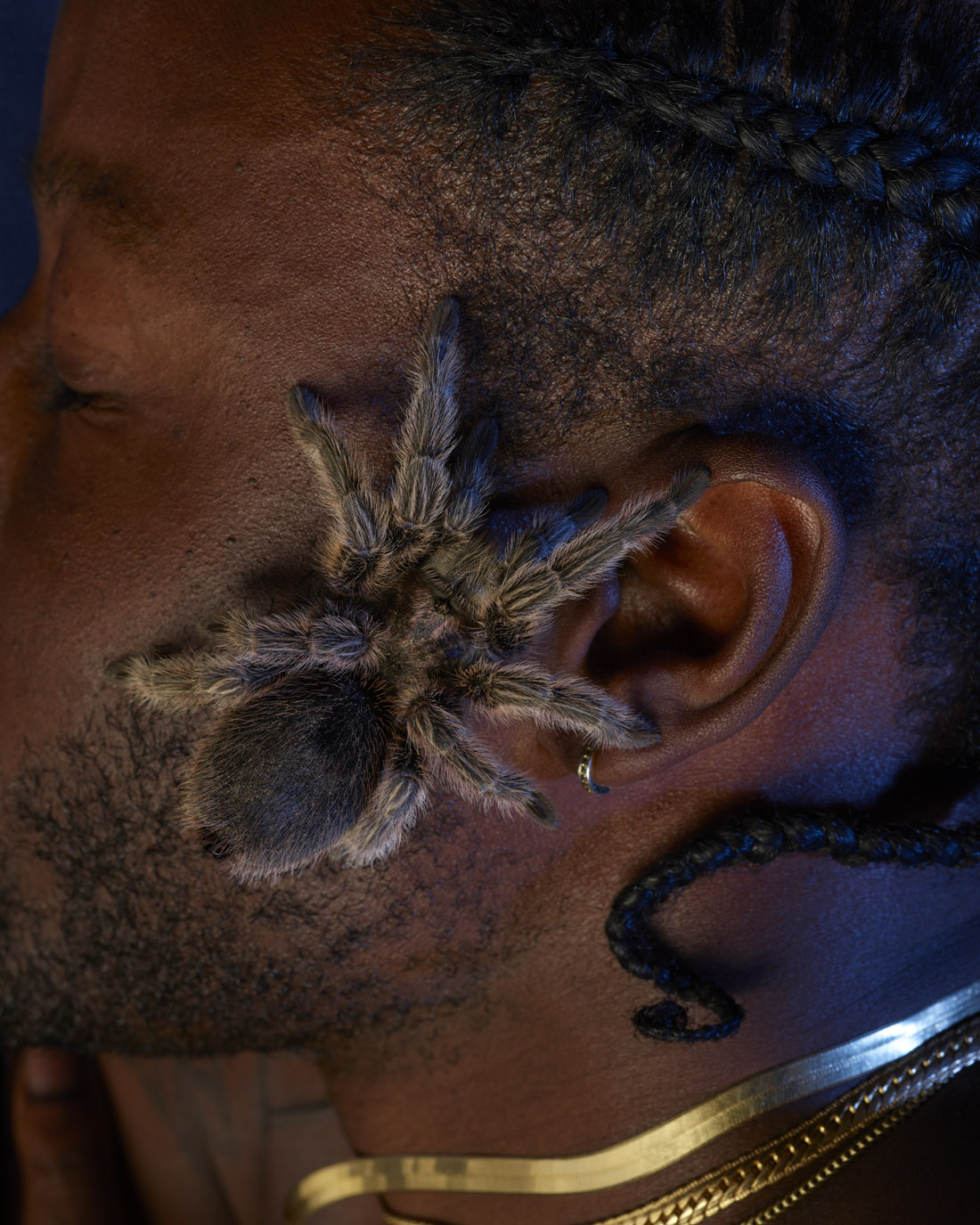An evolving creative dialogue between artist Awol Erizku and Antwuan Sargent — writer, art critic and recently appointed director-curator at Gagosian — has been unfolding since 2014, when Antwuan first interviewed him about his exhibition “The Only Way Is Up”.
“Antwuan was one of the first writers that I spoke to,” Awol says over Zoom, tracing their history back to shortly after he graduated from Yale’s MFA program in visual art. Antwuan went on to feature Awol in his book The New Black Vanguard: Photography Between Art and Fashion, a seminal curation of images by contemporary Black photographers that continues to send electric currents of change through the art world.

While other critics assigned to write about Awol’s practice struggled to connect with his experiments in visual Black vernacular, Antwuan “was already just kind of riffing on it” from the very beginning, Awol says. “I didn’t have to explain half the stuff that I was doing,” he continues, offering context for their collaboration on his new show, opening today. When they met at Antwuan’s office to discuss the exhibition, Awol reflected on the decade they’ve spent building community. “It was just so interesting to sit two galleries down from where we first met. Just kind of completing that loop, or beginning a new loop.”
“Memories of A Lost Sphinx”, on view at Gagosian’s Park & 75 gallery, is also a continuation punctuated by new beginnings, featuring six new images alongside two sculptures that further the artist’s investigation of Afro-esotericism. Much like the photographs shown at bus shelters all over New York and Chicago for “New Visions for Iris”, his 2021 project with Public Art Fund, the images will be mounted in lightboxes and visible 24 hours a day through Gagosian’s glass windows. The illumination itself is a nod to the Great Sphinx of Giza, an ancient Egyptian sculpture also lit up each night which Awol revisits as a mixed-media piece in this exhibition.
Born in Ethiopia and raised in the Bronx, Awol developed a fascination with discovering unexpected points of cultural continuity across difference at a young age. “That’s the way I grew up,” he explains. “I grew up on television and the internet, and there were very few boundaries.”

Egyptian iconography has been a constant reference throughout his career, constantly navigating African and African-American influences to draw connections within the diaspora and beyond through painting, sculpture, video installation, and photography. “I’ve always been interested in not just Black intellectuals, but Black imagination and how expansive that is, how limitless it is,” he says. “I always start from that point. And then I started bringing influences by way of heritage, by way of history,” he says.
It’s possible Awol is most widely known for his portrait of Beyonce, but it feels like his most frequent subjects have been the African sculptures he uses in his complex still lifes, placed in careful juxtaposition to other objects that are in turn imbued with symbolic meaning through association. In addition to several pharaohs, busts of Nefertiti have appeared in a number of his works, from “Someday My Prince Will Come”, flanked by African tribal masks and figures, to “Love Is Bond (Young Queens)”, where she is circled by young girls dressed in Sunday church clothes. She stars in “Memories of A Lost Sphinx” too, in the form of a gold disco ball called “Nefertiti—Miles Davis”.
“The idea for this show goes back to my first trip to Egypt, when I was around 13,” Awol shares, diving deeper into his process. “I’m thinking about the origins of humankind. I’m also thinking about stolen legacies,” he continues, bringing to mind the African artworks that influenced artists like Picasso and Man Ray, only to be characterised as primitive and in need of Western context for validation. “Through my personal research and my own intellectual projects, you realise how much the origin of Western civilisation, Western philosophy, really originates in Africa,” Awol says. His work attempts to re-centre Blackness in the global canon, creating through his images “a lexicon that will one day serve as what I consider Black universal language”.

Awol believes the Sphinx is a ripe symbol for exploring these ideas. The mythical creature itself is an amalgamation of disparate, shapeshifting parts — a human head, a lion’s body, a snake’s tail, and the wings of a falcon — but it also reflects different versions of similar mythologies tracing back across African, Greek and Asian cultures. For this show, he reflected on our reverence for G.O.A.T heroes: individuals so good at their craft they’ve earned the title “greatest of all time.” It’s a contemporary approach to monument building through digital speech and goat emojis that, in his view, mirrors the historical cultural work put into building the original Sphinx. He started to think about his own heroes, like Muhammad Ali and the artist David Hammons, as sphinxes. He describes this as “trying to reimagine the Sphinx as not just this monument that exists in Egypt, but more so like a conceptual and intellectual frame that we can attribute to many other things that are Black.”
“I’m interested in finding other things from our collective history to attribute contemporary conversations that we’re having,” he continues. “It’s an awkward task, as most of my works are, but they’re just offering to meditate, to think. They’re not necessarily answers, they’re questions.” Taking a moment to think about his attraction to such questions, Awol remembers his mother speaking to him in parables through his childhood. “She’s a closeted poet. She refuses to publish anything,” he shares proudly. Like a sphinx, she avoided giving him direct answers, “as a way to make you think,” he remembers. “Everything was very much poetic. I think that way of thinking has brought light to the way I think now, in the way that I age with the world. I love when I see that in art. I like to think about artworks that spark the idea of what else is possible.”
When asked about what lies in his future, about what feels possible right now, Awol questions whether he can answer in the form of a YouTube link. The answer is yes. It’s a viral clip of basketball G.O.A.T Kevin Garnett repeatedly exclaiming “Anything is possible!” while covered in sweat and confetti after the Boston Celtics won the NBA Title in 2008. “I feel like anything is possible,” Awol says with a beaming smile. It’s as if there’s a kind of natural algorithm to life, he observes. “In an era where two things could really be in conversation at the click of a button. Through time, things kind of find their way of making sense.”



